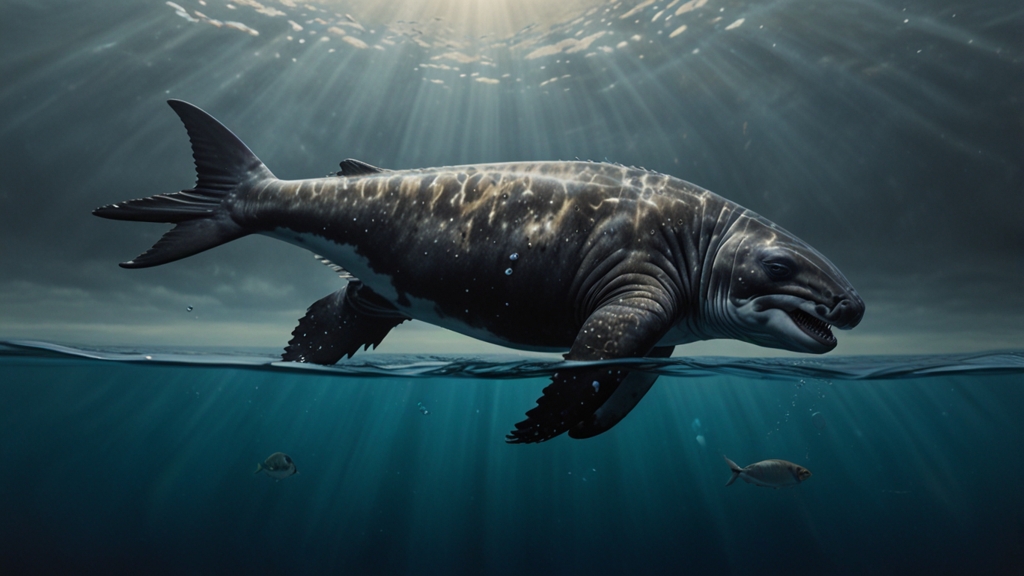A World of Mammals: From the Depths of the Ocean to Mountain Peaks
Mammals are among the most diverse and fascinating groups of organisms on our planet. Their adaptability has allowed them to inhabit nearly every corner of the Earth, from the deepest oceans to the highest mountain peaks. This versatility in habitation not only highlights the evolutionary marvel that mammals are but also underscores their critical role in various ecosystems.
Marine Mammals: Life Beneath the Waves
Marine mammals, such as whales, dolphins, and seals, are extraordinary examples of adaptation. These species have evolved to thrive in underwater environments, developing unique physiological and behavioral adaptations. For instance, whales and dolphins possess a streamlined body shape and a thick layer of blubber for insulation, which enables them to maintain their body temperature in cold ocean waters.
"The blue whale, the largest animal ever known to have lived on Earth, can weigh up to 200 tons and grow as long as 100 feet. Its heart alone is the size of a small car."
These majestic creatures are not only a testament to the grandeur of marine life but also play a pivotal role in oceanic ecosystems. For example, whale falls, where a deceased whale's body provides a bonanza of nutrients for deep-sea organisms, form unique mini-ecosystems on the ocean floor. Such intricate relationships illustrate the interconnected nature of marine life.
Arboreal Mammals: Masters of the Canopy
Among the trees, arboreal mammals like monkeys, squirrels, and sloths exhibit remarkable agility and specialized adaptations to navigate the vertical spaces of forest canopies. Monkeys, for instance, have prehensile tails that act as a fifth limb, aiding in their balance and maneuverability among the trees. Sloths, with their slow-moving, deliberate locomotion, survive by being inconspicuous predators and conserving energy.
"Did you know? Sloths move so slowly that algae can grow on their fur, providing them with a natural camouflage against predators."
The arboreal lifestyle not only shapes the physical attributes of these mammals but also influences their social structures and behaviors. Many tree-dwelling species live in complex social groups where cooperation and communication are key survival strategies.
Mountain Mammals: Survivors at High Altitudes
At the world’s highest elevations, mountain-dwelling mammals such as snow leopards, mountain goats, and yaks have adapted to survive the harsh, unforgiving climate. These species possess specialized traits to cope with the low oxygen levels, frigid temperatures, and rugged terrains. The snow leopard, for instance, has a thick fur coat and large nasal cavities that warm the cold air before it reaches their lungs.
The surefootedness of mountain goats is legendary. Their hooves have a rough texture and a concave shape, giving them exceptional grip and balance on rocky surfaces, enabling them to navigate the steepest of cliffs with ease.
The Intersection of Land and Water: Semi-Aquatic Mammals
Semi-aquatic mammals, such as otters, beavers, and hippos, live a dual existence between land and water. These mammals exhibit fascinating adaptations that enable them to exploit both environments effectively. Otters, with their webbed feet and hydrodynamic bodies, are agile swimmers and skillful hunters in water, while still being capable of moving swiftly on land.
Beavers, renowned for their engineering skills, build dams that create wetlands, benefiting countless other species and altering local ecosystems. Their ability to manipulate their environment showcases the interconnectedness and impact of mammals on their habitats.
The Importance of Conservation
As we marvel at the extraordinary adaptations and the ecological roles of mammals across diverse habitats, it is crucial to recognize the importance of conserving these species. Human activities such as deforestation, pollution, and climate change pose significant threats to mammalian biodiversity. Conservation efforts are essential to protect these incredible creatures and ensure the stability of ecosystems worldwide.
In conclusion, from the depths of the oceans to the peaks of mountains, mammals have adapted in incredible ways to survive and thrive. Their existence not only enriches the tapestry of life on Earth but also reminds us of the importance of preserving the natural world for future generations.












